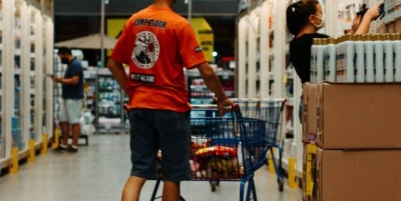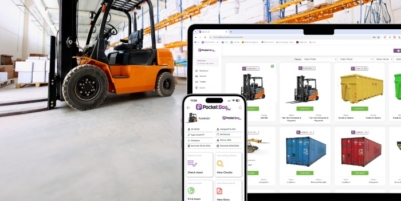-
ROSSLARE EUROPORT TARGETS HEALTH & SAFETY WITH CAMERA TELEMATICS PARTNERSHIP - 2 days ago
-
Landmark Study Reveals Wearable Robotics Significantly Boost Safety and Efficiency in Industrial Environments - July 24, 2024
-
Visku Tackle The Retail Seasonality Challenge One Pallet At A Time - July 22, 2024
-
KAMMAC AND BERGEN LOGISTICS STRENGTHEN FASHION & LIFESTYLE SERVICES IN THE UK - July 19, 2024
-
TENTBOX EXTENDS PARTNERSHIP WITH ARROWXL TO SUPPORT INCREASING DEMAND - July 17, 2024
-
The Perfume Shop improves customer journeys while driving profitability in partnership with Scurri - July 17, 2024
-
ZEROMISSION SECURES £2.3M ($3M) INVESTMENT TO ACCELERATE ELECTRIC FLEETS - July 16, 2024
-
BCMPA CELEBRATES SUCCESS OF 2024 CONFERENCE - July 15, 2024
-
Best of the Best: Jungheinrich Celebrates Triple International Award Win - July 12, 2024
-
GOPLASTICPALLETS.COM CALLS ON NEW CHANCELLOR RACHEL REEVES TO CONSIDER PLASTIC PACKAGING TAX REFORM - July 10, 2024
A new white paper from logistics and warehousing specialists, Bis Henderson Consulting, ‘Preparing supply chains for a new retail landscape post Coronavirus (COVID-19)’, argues that many of the changes that we can expect to see in retail were already on their way before the current epidemic, but will be amplified and accelerated as we adapt to a ‘new normal’. The report finds profound implications for retail supply chains, distribution networks and property asset portfolios.
Louisa Hosegood, Digital and Strategy Director at Bis Henderson Consulting and author of the report, says: “There will still be consumers, retailers and supply chains after Coronavirus, but it is unlikely to be ‘business as usual’. The retail economy will bounce around for many months before settling into a ‘new normal’, and retailers will have to show true resilience – not so much bouncing back, as bouncing forward to embrace and exploit new opportunities as they emerge in a radically changed environment.”
Conscious consumers
The white paper highlights the emergence of the ‘conscious consumer’ across all demographics. “Consumers are evaluating what counts as ‘essential purchases’, not just against lockdown rules but more widely against environmental, resource, and social concerns,” says Hosegood. “These include the climate change impacts of goods and their transportation; concerns over plastics – especially packaging – and waste more generally; ethical issues including modern slavery, human rights abuses and animal welfare; and a reaction against buying ‘disposable’ items intended for a short or even single-use life.”
She adds: “We may see demand grow for goods to be repairable rather than replaceable, and developments in the leasing or rental of consumer durables, as an alternative to outright purchase.”
Bricks versus clicks
The future of ‘the High Street’ and the impact of online shopping are also reviewed in the report. Before the outbreak, online already accounted for some 21% of retail sales and lockdown rules have boosted the online share still further. Hosegood says: “Retailers are having to invest seriously in online activities that have often been seen as fairly marginal, but are now commercially critical. And many small producers are now going D2C (direct to consumer) online, bypassing traditional retail outlets.”
The white paper explains how shopping habits are changing fast. “A significant portion of this new online trade is likely to ‘stick’, but that isn’t the whole story and other influences could pull in different directions. Consumers are now used to minimising the number of shopping trips. That may boost the ‘big weekly shop’ model. On the other hand, travel restrictions have reintroduced consumers to the corner and convenience store. That may chime with a trend being picked up in pre-crisis consumer research suggesting that ‘conscious consumers’ want retail and shopping to be in some sense ‘community building’ – which may mean local service, local employment, local sourcing, use of local contractors and so on,” says Hosegood.
Further influences are revealed in the paper. Technology is not just facilitating online shopping, but also homeworking. Homeworkers can be much more flexible over online delivery slots. However, homeworkers might find popping to the local shops an attractive way of taking a screen break and dividing up the working day. This may mean fewer workers shopping or browsing in town centre shops in their lunch break. It may be that High Streets pivot towards a more leisure-based economy, and retailers vary their hours, perhaps towards a more Continental model of evening shopping.
Keeping it real
The report makes it clear that the consumer will increasingly favour a ‘mixed media’ approach, combining the best of the online and physical shopping experiences. “They may research and shortlist online, but not make the purchase until they have ‘kicked the tyres’. For other goods shoppers may browse in store, but complete the transaction online. Consumers will continue to value the advice and guidance of a sales assistant, either in store or online,” she says.
According to the white paper, the impact of these trends, and others, will vary across retail sectors and over time. For physical retailers, all is not lost but some fundamental re-imagining is required. Many online players, too, will have to adapt, as they try to make real profit out of increasingly discriminating and savvy consumers. Is costly same day delivery, for example, really a consumer priority?
Importantly, the key finding of the report is that retailers will have to show flexibility, agility and responsiveness – and this will have to be reflected in their supply chains. They will need to retain the capacity for innovation that has been evident in the current crisis. That applies in stores and on websites, but also in how and where goods are sourced, how they are produced, and where and how services, including logistics and distribution, are procured and structured. Critical too, will be the way retailers adapt their physical estate to support profitable retailing that meets constantly developing consumer requirements, across a mixed media, omnichannel landscape. All is revealed in the full white paper.
The full white paper, ‘Preparing supply chains for a new retail landscape post Coronavirus (COVID-19)’ can be downloaded here:
https://www.bis-hendersonconsulting.com/preparing-supply-chains-for-a-new-retail-landscape-post-coronavirus-covid-19/

































